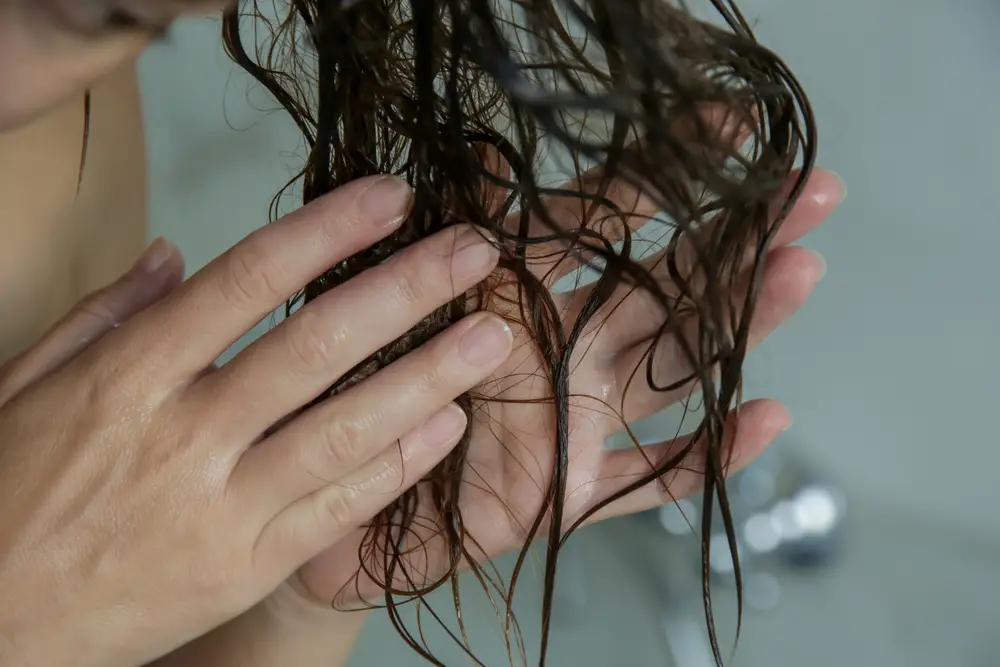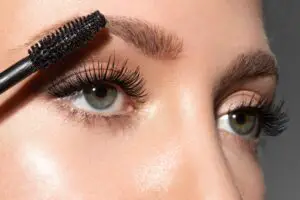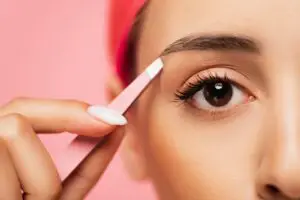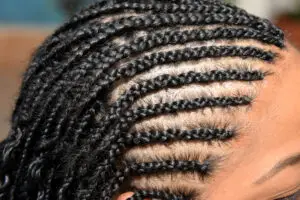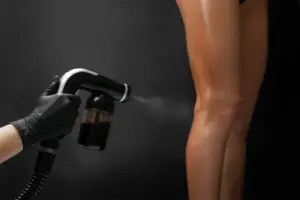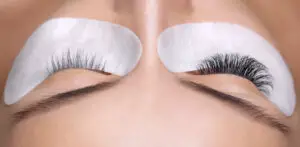Dyeing your hair can be an exciting way to change your look and express your personal style. One common question that arises when it comes to hair colouring is whether or not it’s possible to dye hair while it’s wet. The answer to this question is yes, hair can be dyed when wet, but the success of the process varies depending on certain factors.
Wet hair dyeing is a technique that some professional stylists employ and it can offer certain benefits. For instance, dyeing wet hair can lead to more even colour distribution and better colour absorption. Moreover, it can make the clean-up process after dyeing much easier.
However, whether or not you should dye wet hair ultimately depends on the hair dye formula you’re using, as some products work best on dry hair.
It’s important to note that dyeing wet hair may not yield the same intensity of colour as dry hair dyeing. The results you can achieve with wet hair dyeing might be more subtle and suited to specific highlighting techniques. Always make sure to read and follow the instructions on your chosen hair dye and consult with a professional stylist if you’re unsure how to proceed.
Can You Dye Hair When Wet
Yes, dyeing hair when wet is possible, but its effectiveness depends on the dye formula and the desired result. Wet hair dyeing can be beneficial in certain situations, like achieving subtle results or creating specific highlighting techniques. Let’s discuss the advantages and disadvantages of wet dyeing.
Advantages of Wet Dyeing
- Better Colour Absorption: Wet hair is more absorbent, allowing for better colour absorption and more even results.
- Less Damage: Applying dye to wet hair can reduce the amount of damage caused by the process. Wet hair is more flexible and less prone to breakage, compared to dry hair.
- Easier Application: Dyeing wet hair can be easier, as the hair is easier to detangle and can help spread the product more evenly.
- Less Mess: Wet hair dyeing can also be less messy, as the water can help prevent the dye from staining your skin or other surfaces.
Disadvantages of Wet Dyeing
- Diluted Colour: Water acts as a diluting agent, which can make the colour less vibrant than if applied to dry hair. This can be a concern for those who want more intense colour.
- Different Formula Requirements: Certain dye formulas are specifically designed for dry hair application. Applying these dyes to wet hair can lead to uneven or unpredictable results.
- Longer Processing Time: Due to the added water, the processing time for wet hair dyeing might be longer compared to dry hair dyeing.
In conclusion, dyeing hair when wet has its advantages and disadvantages. Always consider the dye formula and desired result before proceeding with the wet dyeing method.
Types of Hair Dye
When it comes to dyeing wet hair, it’s essential to understand the different types of hair dyes and their suitability for wet hair application. In this section, we’ll discuss two popular types of hair dyes: Permanent Dyes and Semi-Permanent Dyes.
Permanent Dyes
Permanent hair dyes contain chemicals like ammonia and hydrogen peroxide, which open up the hair cuticles and help the colour deposit deep into the hair shaft. When applying a permanent hair dye, it’s generally recommended to have dry hair. This is because wet hair is more fragile, as the open cuticles can make the hair more susceptible to damage from the chemicals.
Additionally, water can dilute the dye, which may result in uneven colour distribution or a weaker colour outcome. Consequently, if you’re using a permanent dye to achieve a more drastic and lasting colour change, it’s best to apply it to dry hair to ensure optimal results.
Semi-Permanent Dyes
On the other hand, semi-permanent hair dyes are less harsh and don’t contain ammonia or hydrogen peroxide. These dyes only coat the hair shaft, allowing for a more temporary colour change that fades over time. Semi-permanent dyes can be applied to wet hair, and in fact, this method can sometimes provide even colour distribution and less mess.
When applying semi-permanent dye to wet hair, you can treat it like a shampoo application – working the dye into the hair and allowing it to saturate the strands more easily. This means you can conveniently dye your hair in the shower, with minimal spillage or mess.
Keep in mind that semi-permanent dyes are better suited for subtle colour changes or enhancing existing hair hues, rather than dramatic transformations.
In conclusion, choosing the right hair dye method for wet hair application depends on your desired results and hair type. Always follow the manufacturer’s instructions and consider consulting a professional if you’re unsure about the best approach for your hair.
Wet Hair Dyeing Techniques
Wet hair dyeing techniques offer some advantages over traditional dry hair dyeing, including better colour absorption and even results. In this section, we will discuss two important aspects of wet hair dyeing: Colour Application Methods and Hair Dye Selection.
Colour Application Methods
There are several methods for applying colour to wet hair, each with its unique benefits.
- Shampoo and Dye Mix: This method involves mixing your chosen hair dye with shampoo. Apply the mixture to wet hair, similar to how you would apply regular shampoo. This method is not only an effective way of colouring your hair but also helps in better distribution of the dye through the hair.
- Direct application: In this method, you can apply the hair dye directly to wet hair using a brush, applicator bottle, or your hands. Ensure to wear gloves to avoid staining your hands. Make sure to evenly distribute the dye, covering each strand for uniform colour.
Remember to follow the manufacturer’s instructions on the respective product packaging for optimal results.
Hair Dye Selection
Choosing the right hair dye plays a crucial role in the success of wet hair dyeing. Here are some types of dyes that work well for wet hair:
- Semi-permanent hair dye: This type of dye is ideal for wet hair, as it does not require ammonia or developer to work. Semi-permanent dyes offer a low-commitment colour change and last for a few weeks before fading away.
- Direct dyes: Also known as fashion or unnatural dyes, these are perfect for creating vibrant, bold colours like pastel pink, blue, or violet. Similar to semi-permanent dyes, they work well on wet hair and do not need developer or ammonia.
- Demi-permanent hair dye: These dyes bridge the gap between semi-permanent and permanent dyes, requiring a low-volume developer to work. While they work on wet hair, demi-permanent dyes might not deliver the expected results as effectively as with dry hair.
Before selecting a hair dye for the wet dyeing technique, read about the specific product and ensure it’s suitable for wet hair application.
Precautions and Tips
When considering dyeing your hair while it’s wet, it’s important to follow certain precautions and tips. This section will focus on allergy tests, hair care after dyeing, and common mistakes to avoid.
Allergy Test
Before you proceed with dyeing your hair, it’s crucial to perform an allergy test. This can help prevent any adverse reactions to the hair dye. To carry out an allergy test:
- Mix a small amount of dye following the manufacturer’s instructions.
- Apply the dye to a small, inconspicuous area behind the ear or on the forearm.
- Leave the dye on for the recommended time, typically 48 hours.
- If any redness, itching, or irritation occurs, do not use the product.
Hair Care After Dyeing
Once you’ve successfully dyed your wet hair, proper care is essential for maintaining the health and colour of your locks. Some tips for hair care after dyeing include:
- Only use products specifically designed for colour-treated hair, such as shampoos and conditioners.
- Limit the use of heat styling tools, or use them on lower heat settings.
- Try to avoid frequent washing; this can cause the colour to fade more quickly.
- Apply a deep conditioning treatment once a week to keep your hair moisturised and healthy.
Common Mistakes
There are a few common mistakes to avoid when dyeing wet hair:
- Applying permanent hair dye: Permanent hair dye should not be applied to wet hair as the water can dilute the colour and cause uneven results. Stick to semi-permanent or demi-permanent dyes when working with wet hair.
- Skipping a strand test: Always perform a strand test on your hair before you apply the dye to your entire head. This will give you an idea of the final colour and how long you need to leave the dye on for your desired result.
- Over-processing: Leaving the dye on for too long can cause damage or undesired results. Always follow the instructions that come with the hair dye product.
By following these precautions and tips, you can achieve your desired hair colour while minimizing the potential risks associated with dyeing your hair while wet.
Conclusion
In the world of hair dye, there are various factors to consider before making a decision on whether to apply colour on wet or dry hair. On one hand, it is possible to dye wet hair. Some benefits of dyeing wet hair include a more even distribution of colour and a faster, more comfortable process as the hair is damp and easier to manage.
However, it’s important to note that there may be some drawbacks to dyeing wet hair, such as the risk of uneven dye application if the hair is too wet. Hair should be towel-dried to avoid the dye sliding off during the process. Although some hair dye processes like a balayage with a root shadow can be performed on wet hair, factors such as hair type, desired colour, and the type of dye being used should be considered.
It’s essential to closely follow the manufacturer’s instructions included with the hair dye product or seek help from a professional stylist for the best results. Remember that experimenting with hair dye can be an enjoyable and creative process, but it’s vital to do your research and make informed choices to achieve a satisfying outcome.

I’m Jennifer a beauty and wellness expert. I believe in promoting a sustainable and healthy lifestyle from within. Helping people feel good is my passion; whether it’s teaching yoga or offering skincare advice.

